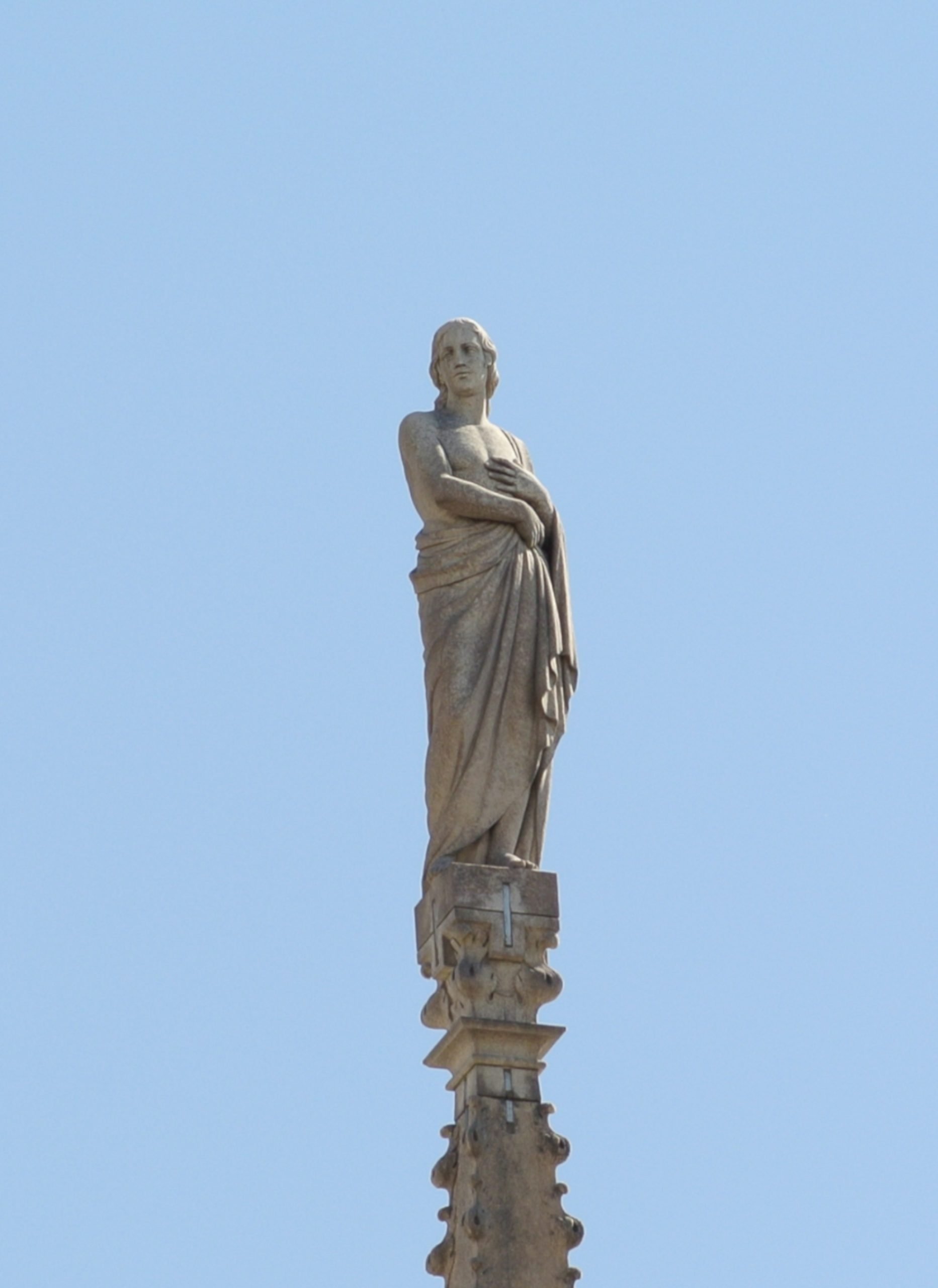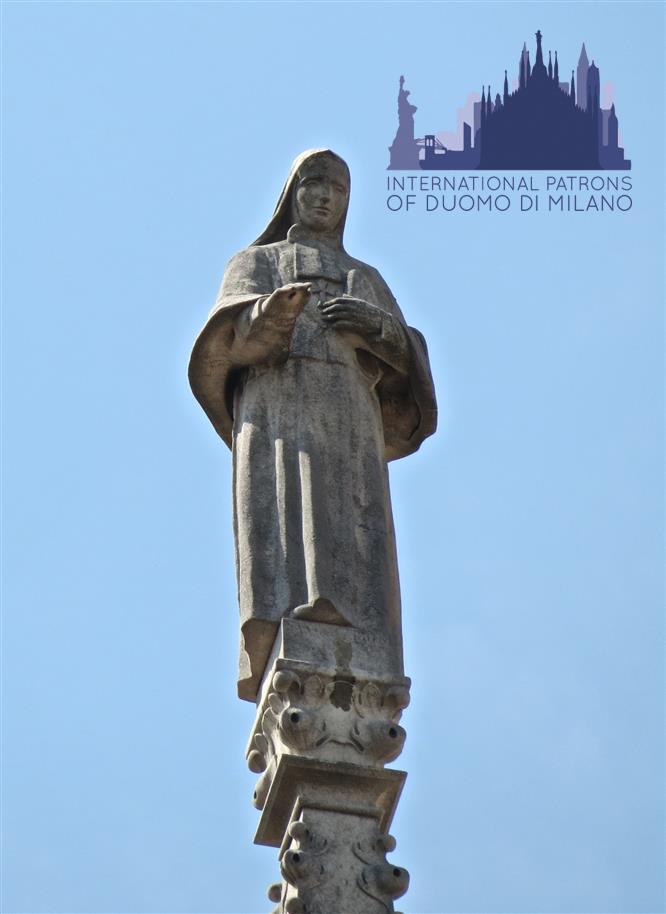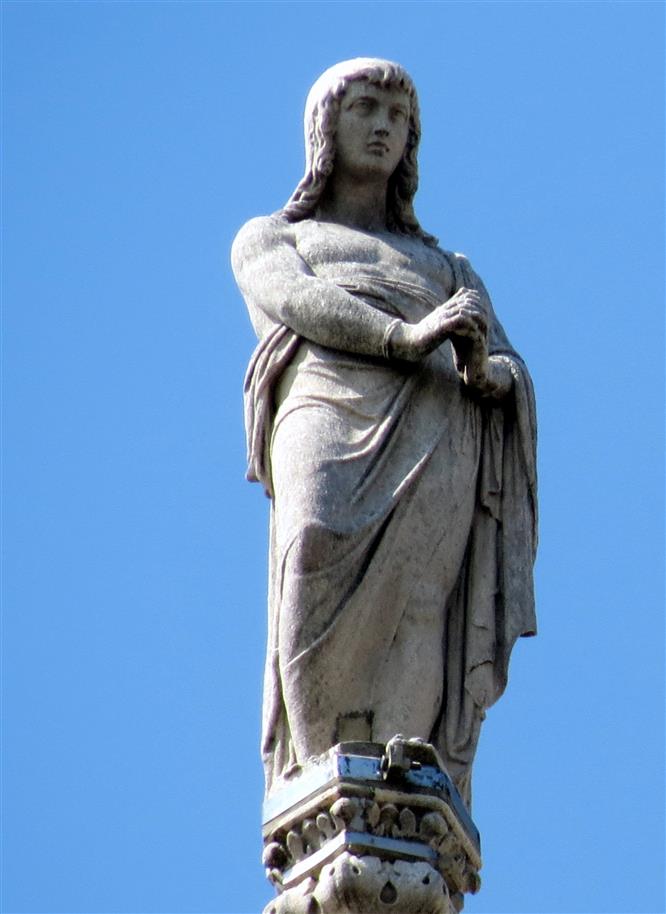Like the homonymous spire on the façade, the G17, the San Vittore in the apse area also embodies that famous soldier from Mauritania who later became one of the most famous Milanese martyrs. The oldest information about him comes from Saint Ambrose in the Explanatio evangelii secundum Lucam and in the Hymn in honor of the martyrs Vittore, Nabore and Felice, who died in the city of Lodi in defense of the faith. In the Acts of the 8th century, it is said that Vittore refused to continue military service. Dragged to the hippodrome of the Circus in the presence of Maximianus Herculeus, he refused to betray the faith despite the atrocities to which he was subjected. Flagellated and imprisoned, after an almost miraculous escape, he was captured again and finally beheaded. His body remained unburied and guarded by two wild beasts, until Saint Maternus gave him a worthy burial. He is a saint much loved by the Milanese, who dedicate monuments and churches to him, including the prison.
The tales of the statue in Dome’s building site:
The statue of San Vittore Martire was originally created by the sculptor Grazioso Rusca between 1813 and 1814. In typical nineteenth-century style, the statue appeared devoid of any element or detail that identified it as San Vittore. On the contrary, the martyr appeared as a classical figure, aesthetically beautiful, proportionate, harmonious, as was customary in that era. Rusca’s work was recently removed from the Spire to be replaced with a faithful reproduction, the work of Nicola Gagliardi. However, looking at this spire today, one can clearly see that San Vittore has not actually been positioned yet. These are the times of the Duomo and its construction site, a mix of research, checks, consolidation works, which sometimes require time, but which are necessary to make the Cathedral shine with its ancient beauty.
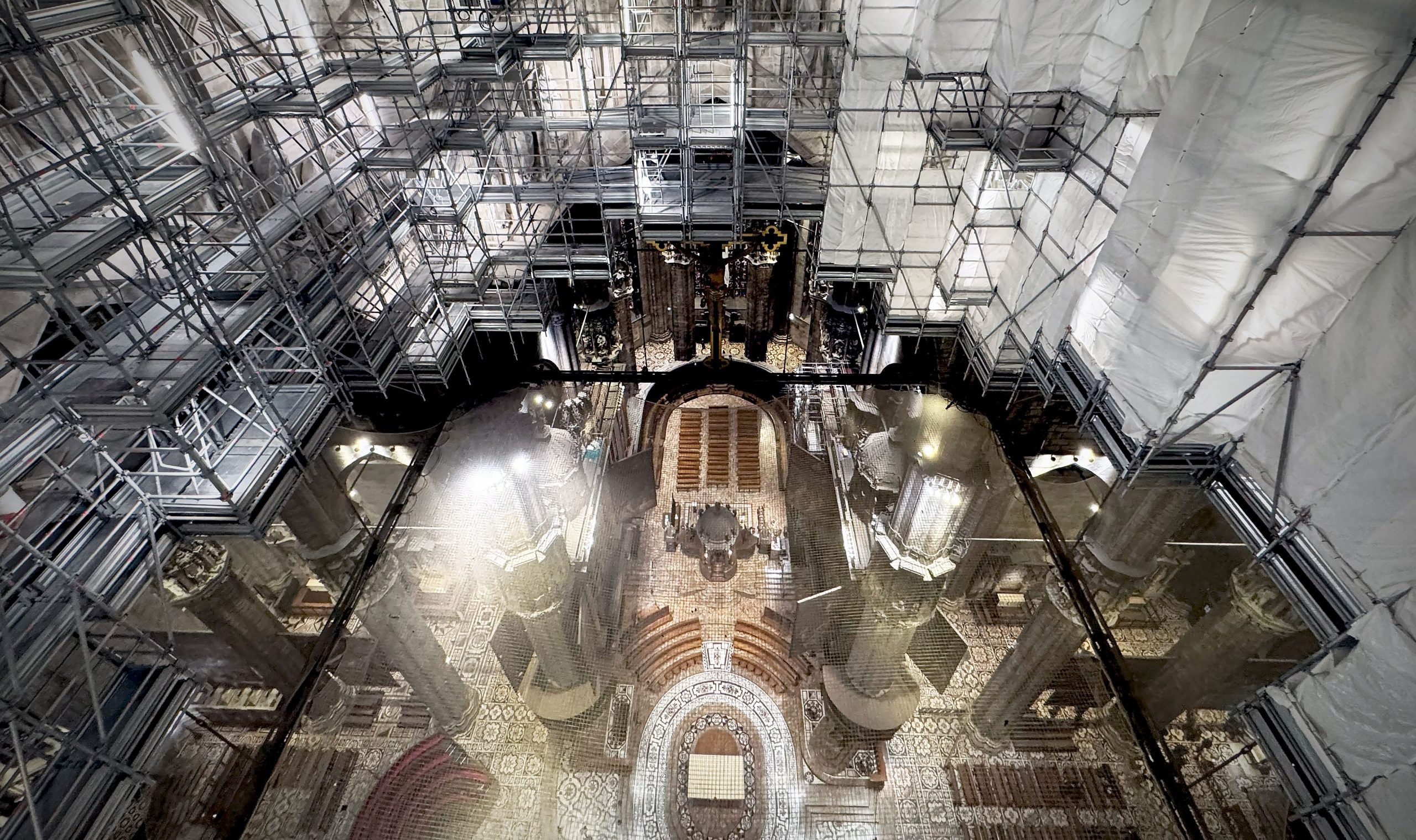
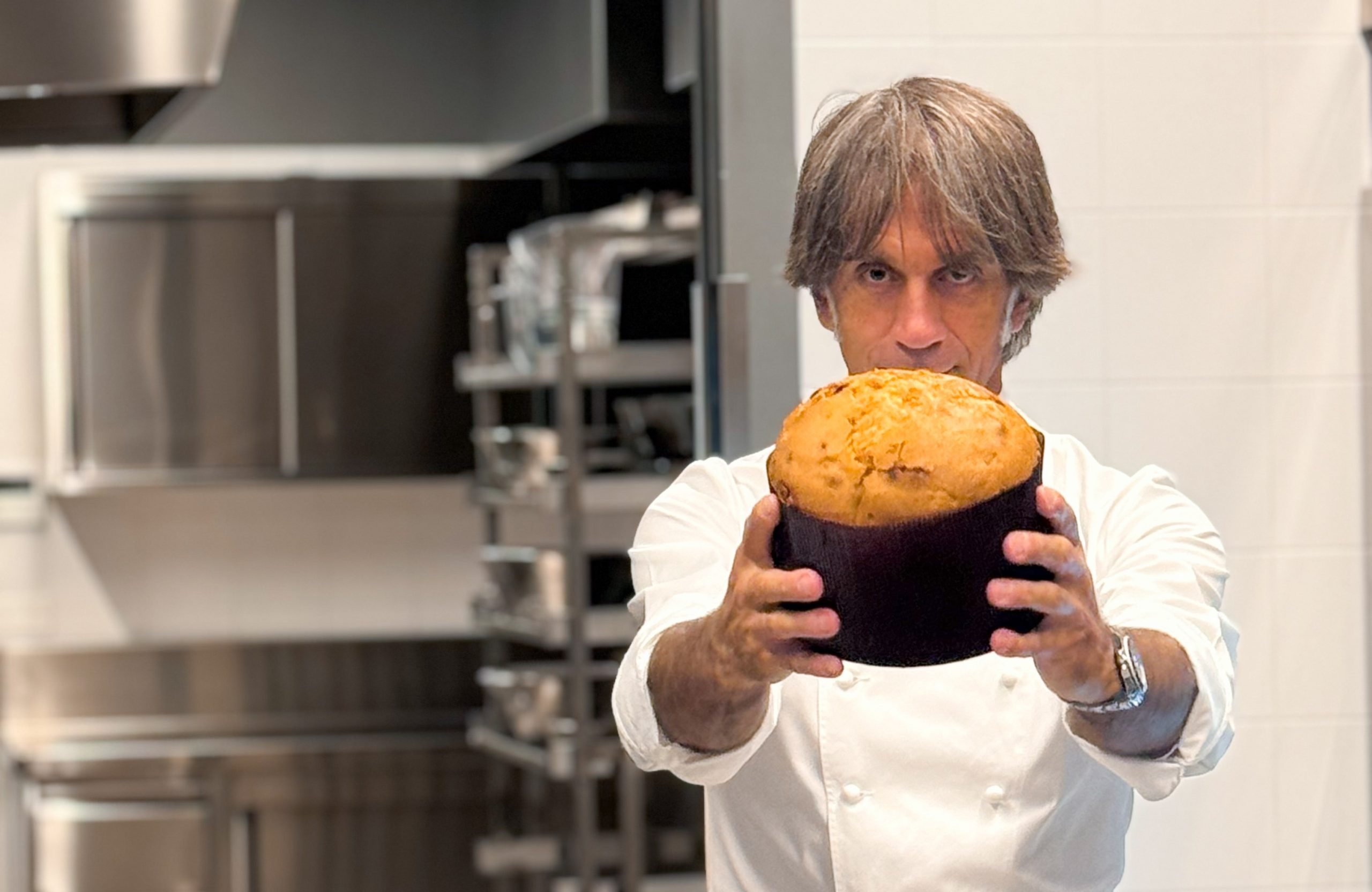
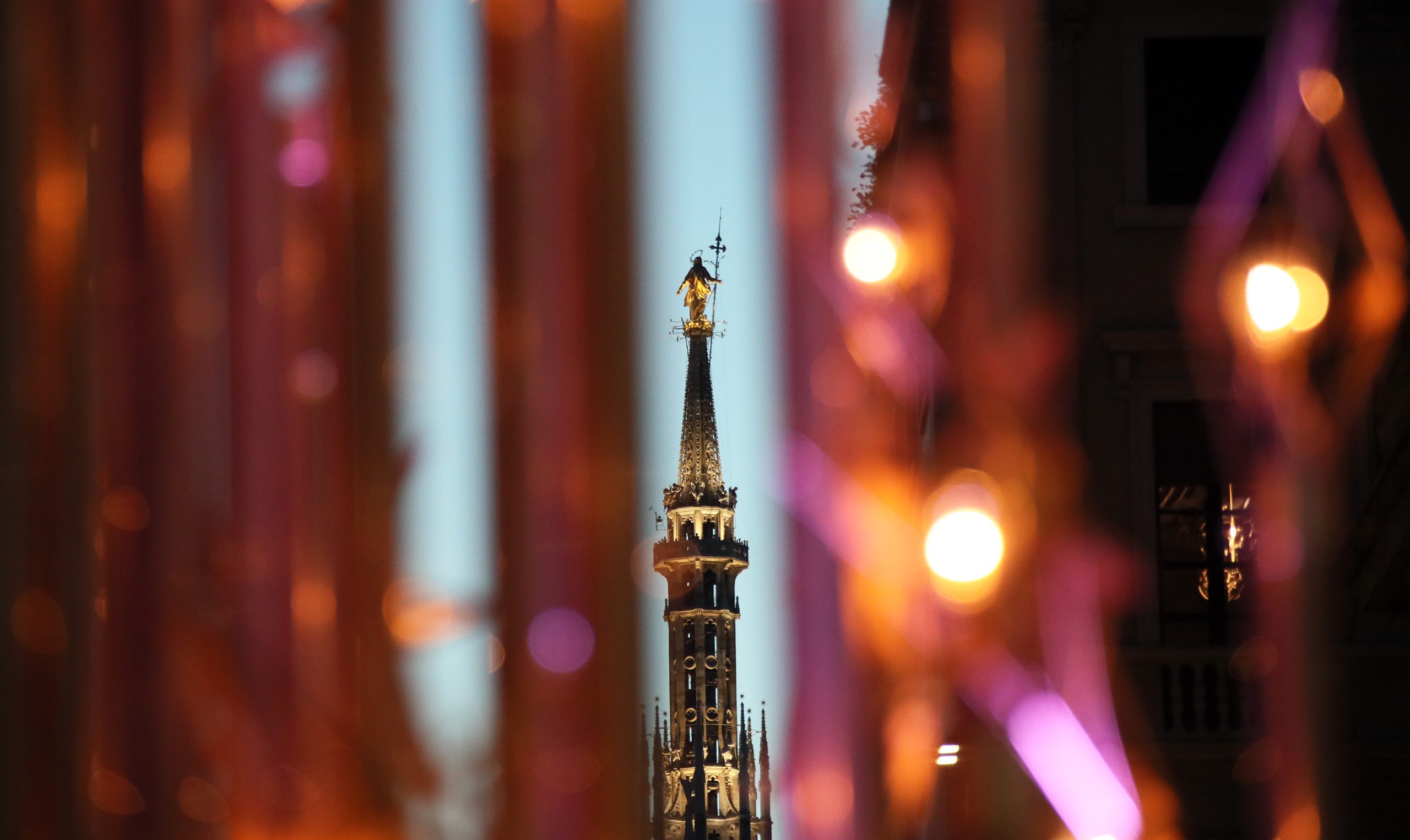
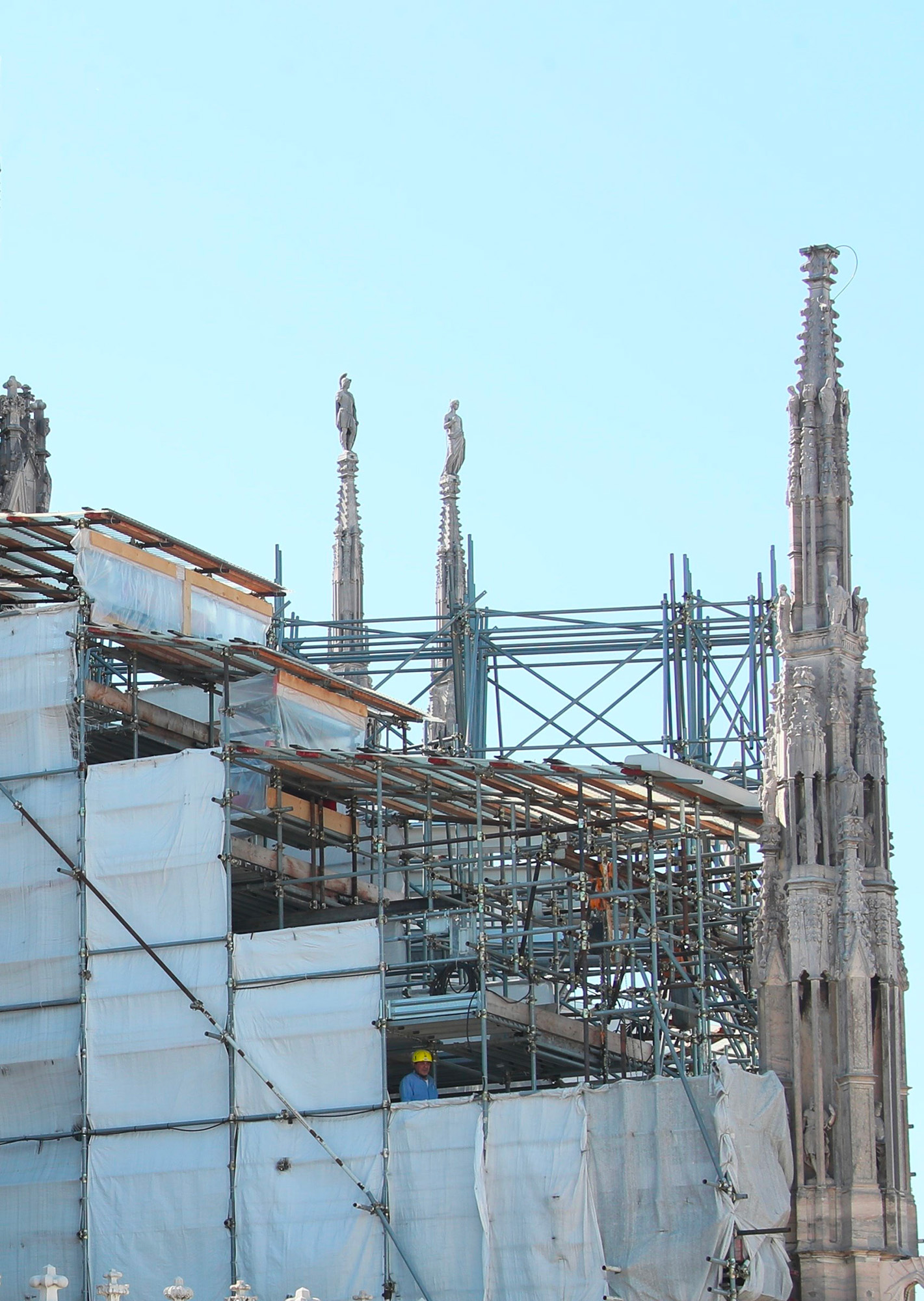
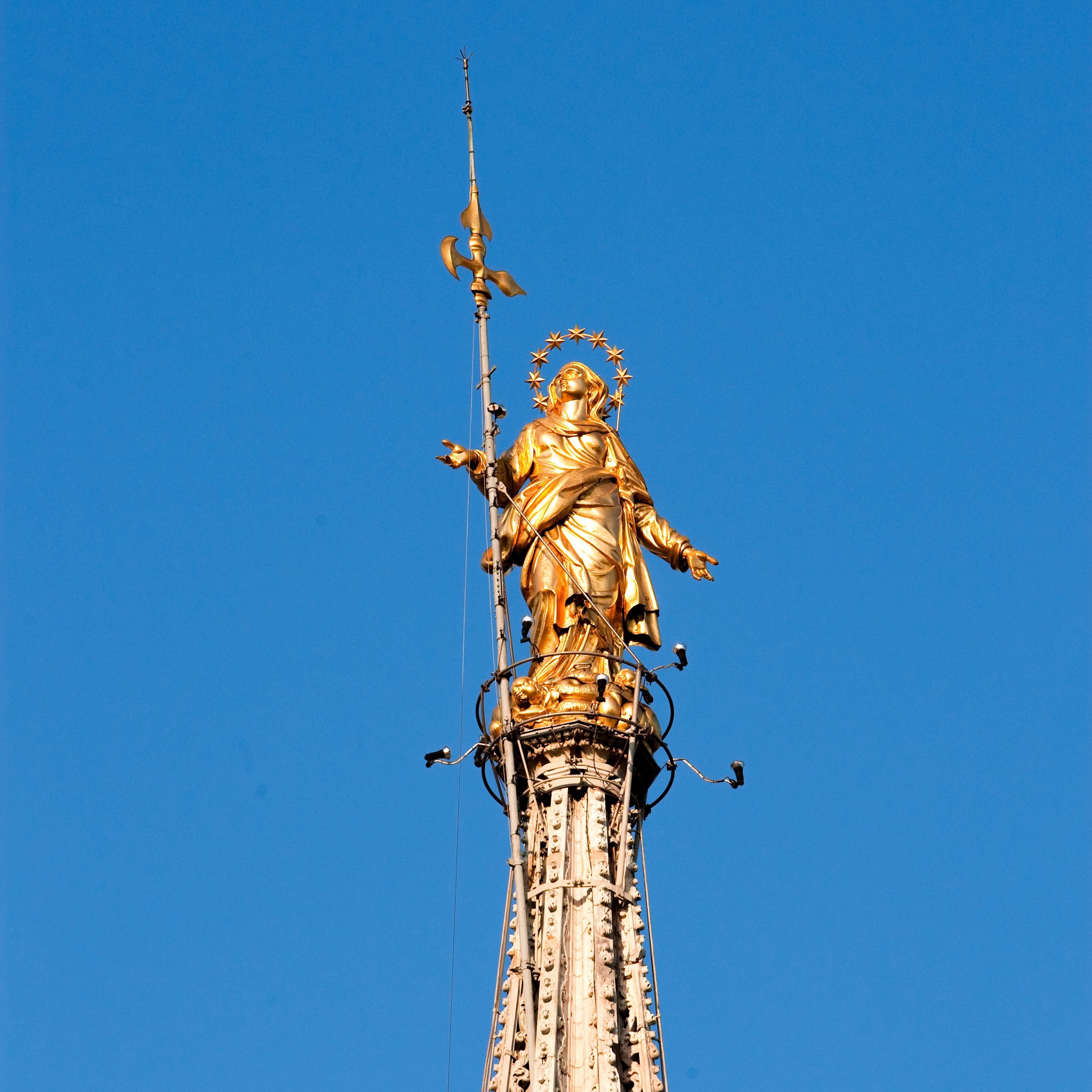
 Tiburio
Tiburio